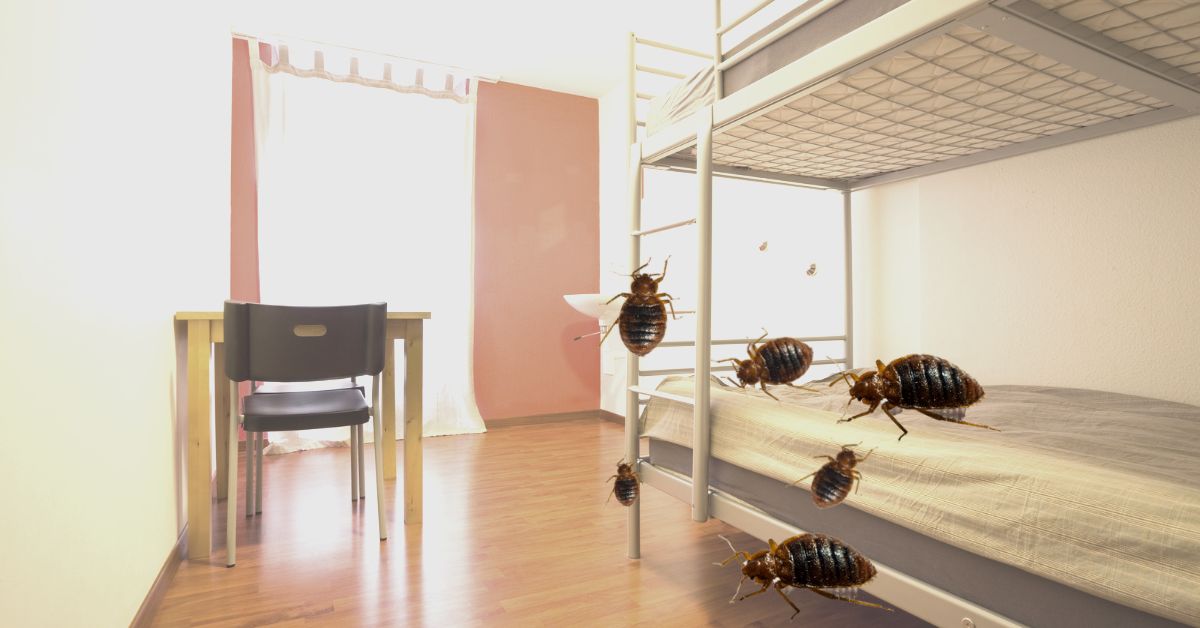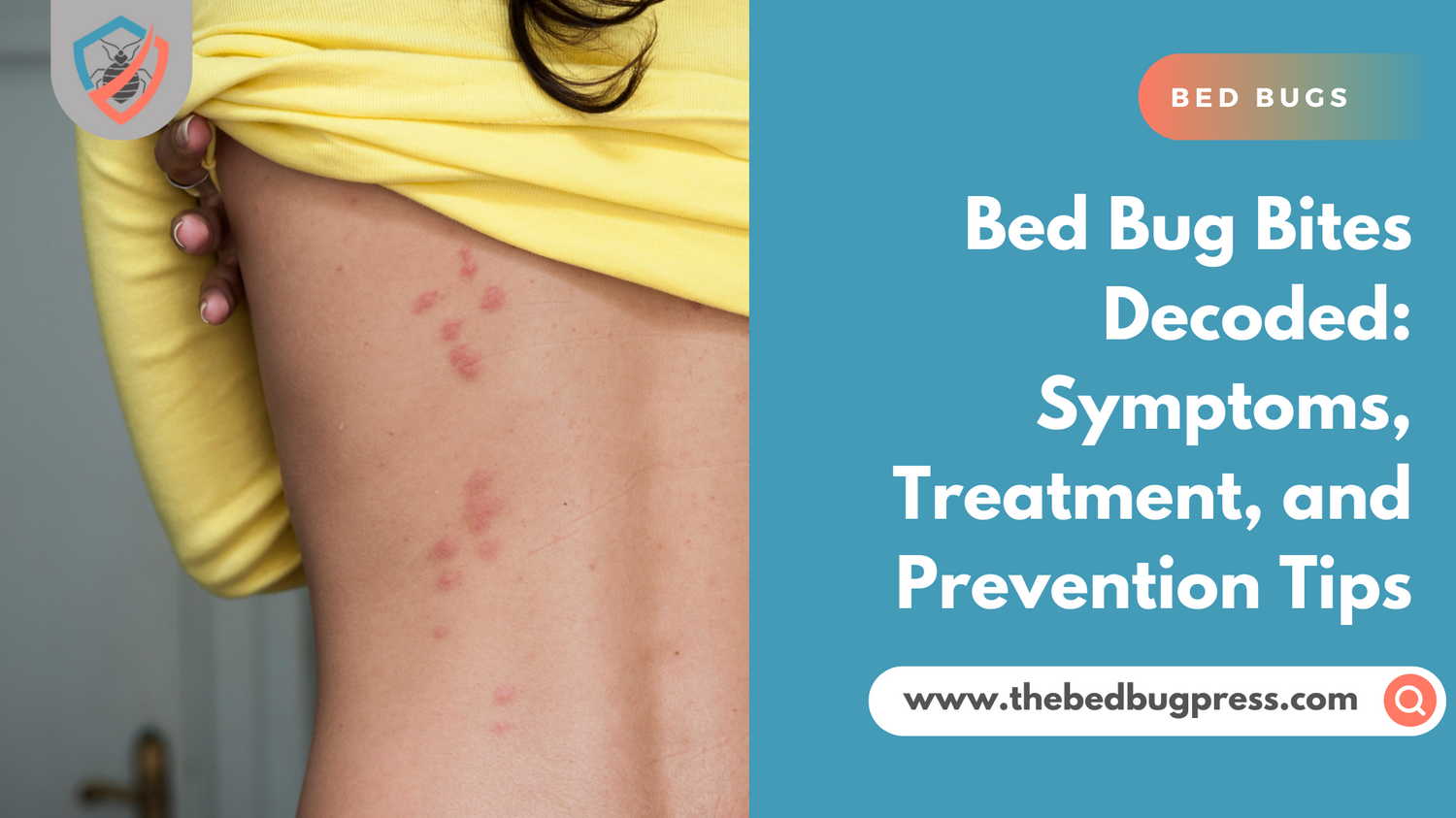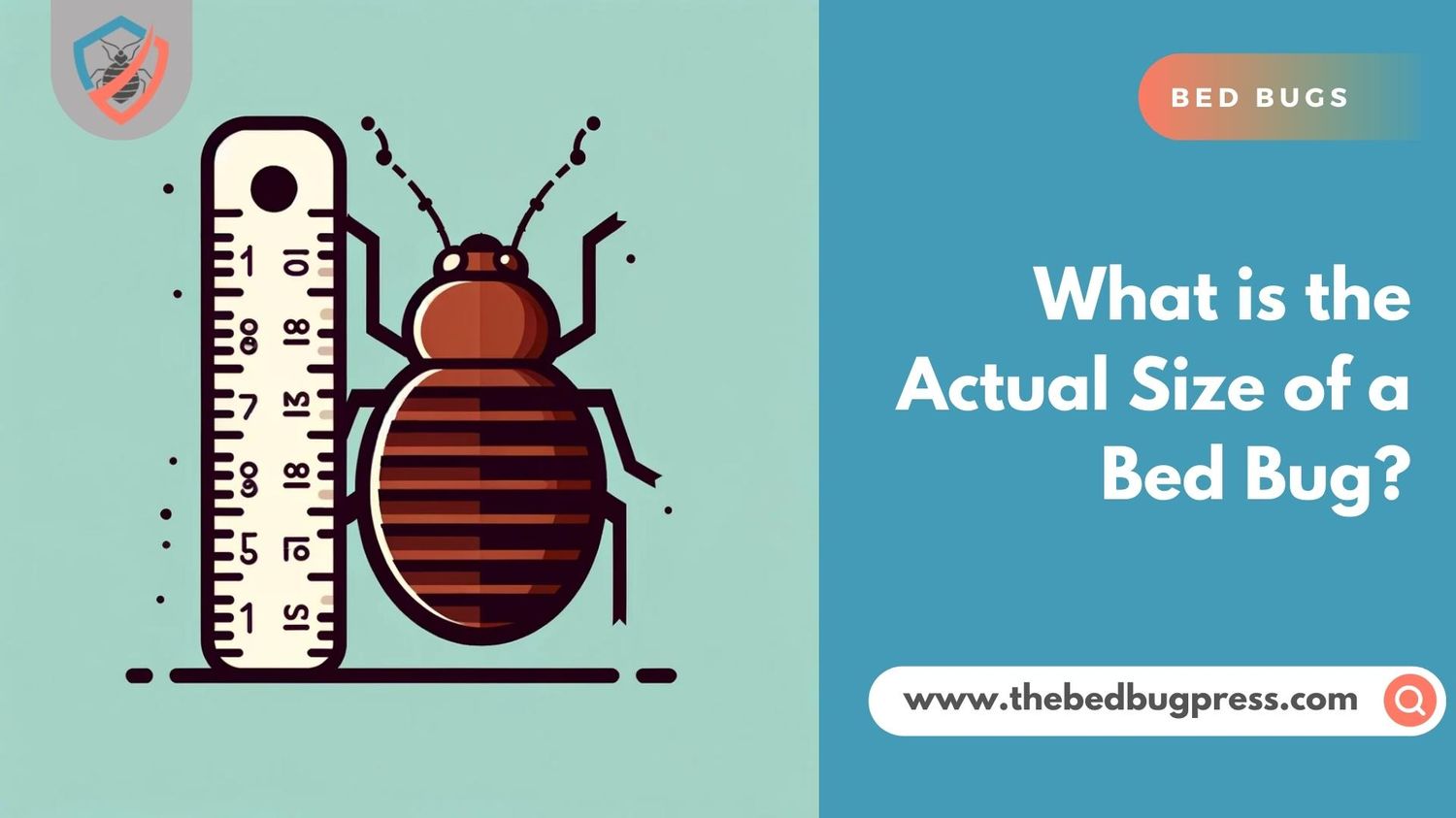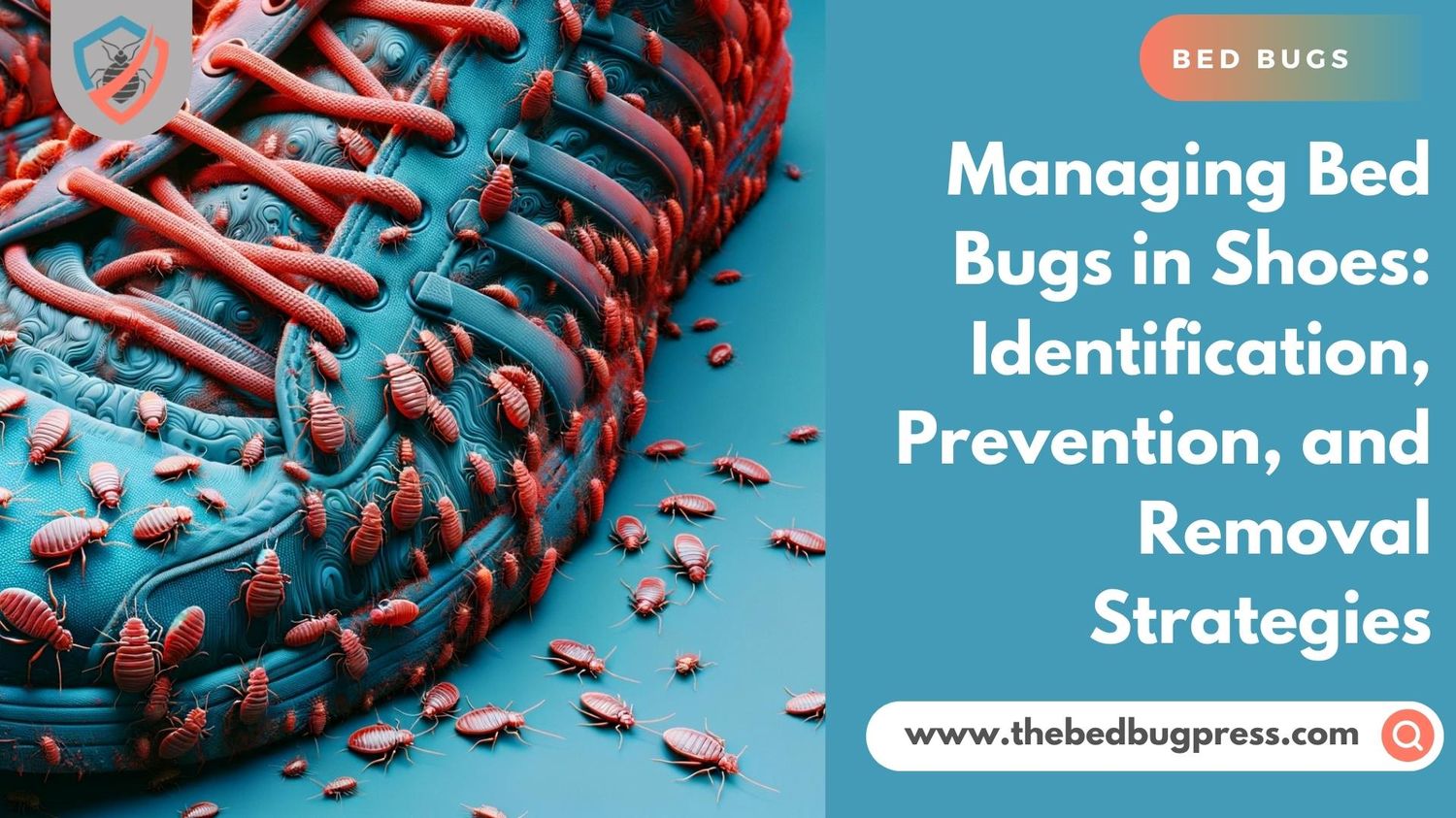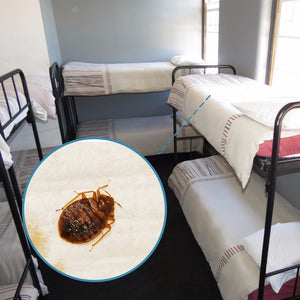
The resurgence of bed bugs in previous years was mainly caused by the increase in traveling and various hotel stays. These pests are hitchhikers and will latch onto any of your belongings and will eventually inhabit your home. It is no surprise why bed bugs are one of the most invasive pests found in dorms. The resurgence of bed bugs in previous years was primarily caused by an increase in travel and hotel stays.
Can dorm beds have bed bugs?
Yes, bed bugs can infest an entire college dorm as they can move from one room to another by attaching themselves to school supplies, students’ backpacks, or anything they can latch onto.
According to a recent study by the NPMA, bed bugs are on the rise in various types of living spaces, including college dormitories. In fact, a staggering 54% of pest professionals surveyed reported treating bed bug infestations in college dormitories in 2011.
This also applies to those living in apartment buildings, known for bed bug infestations. If you are a student or a parent sending your child to dorms, you may want to arm yourself with the basic knowledge on how to deal with bed bugs just before the start of the school year. You don’t want your students bringing bed bugs home during the holidays.
Detecting Bed Bugs in a Dorm Room
If you are a parent sending your child to college or a student trying to prevent bed bugs, it’s important to take some precautions. These include inspecting your room and taking the following steps to make sure you don’t see any signs of bed bugs.
Full bed inspection
Most likely, the college dorm will already have a desk, a nightstand, a dresser, a bed frame and a mattress. If the mattress was left by the previous user, it is recommended that you inspect it closely before your first night of using it.
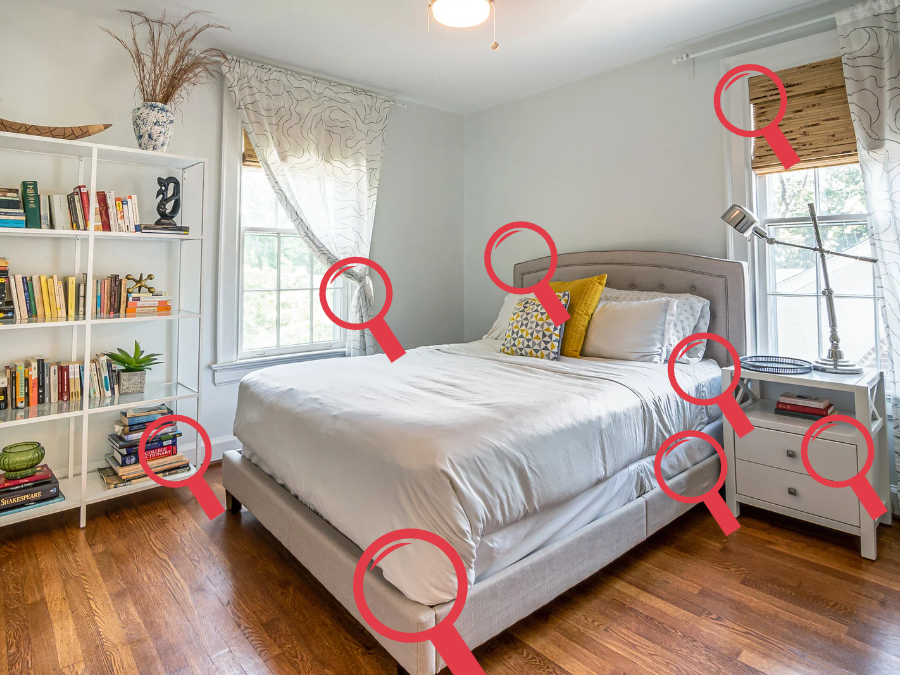
Using a flashlight, check all sides, bottom and top surfaces, and seams for signs of bugs.
Next, check the bed frame. Look at the crevices and corners. You can easily spot these bugs and their eggs with the naked eye.
Check every piece of furniture inside the room.
People commonly believe bed bugs only take the bed as their hiding spot. On the contrary, they can live in any dark and cozy place such as corners of drawers and under dressers.
Inspect the walls
Don’t forget to check the walls. Inspect every crack and crevice, and check the light sockets and other potential hiding spots.
Remember that these pesky critters are lazy and will only live near their host. However, they can travel to higher spaces just to reach their food source. Therefore, it is better to check all possible hiding areas before completely settling in the room.
What to Do If You Find Bed Bugs in Your Dorm
These are a few simple things that you can do if you find bed bugs in your dorm:
Let the dormitory administration know about your bed bug problem
Don’t delay in making a report so that the infestation is dealt with at once. In the event that they won’t do anything, contact the student health services or the health department. You can contact any department that is able to treat your dorm infestation properly.
Wash bedding and clothes
If you find out about these pests a few days after moving in, you should wash all your bedding and clothes in the hottest water cycle. You should place all of your used clothes in a water-soluble bag before washing to prevent the bugs from spreading to other places as you carry it to the laundry room. After this step, dry them in the hottest cycle and put them in sealed bags.
Make vacuuming a habit
It may be difficult to squeeze vacuuming daily into your schedule, but try to do it daily for the sake of getting rid of bed bugs. Vacuum rugs and drapes daily to get rid of bugs stuck in these articles.
Install bed bug detectors and monitors to prevent full-blown bed bug infestations
Bed bug detectors and monitors are specifically designed to detect the presence of bed bugs early on, before they can establish a full-fledged infestation. These devices can be installed in a variety of locations throughout your room, including under the bed, inside dresser drawers, and other areas where bed bugs are known to hide. They can detect bed bugs through a variety of means, including CO2 emissions, heat, and chemical attractants.
Furthermore, bed bug monitors and detectors can assist you in understanding how an infestation is developing so that you can take appropriate measures to stop it. They can detect the presence of bed bugs and their eggs and alert you if the infestation is spreading. This can be extremely beneficial in keeping bed bugs at bay in your dorm room.
Finally, bed bug monitors and detectors are simple to use and can be placed in various locations throughout your dorm room, allowing you to monitor the entire room rather than just the bed. They are also reusable, so you can use them in different locations or dorm rooms.
In short, bed bug monitors and detectors are an effective, simple, and low-cost method of detecting and preventing bed bug infestations in dorm rooms. They can detect the presence of bed bugs early on and assist you in taking the necessary steps to stop an infestation before it worsens.
Be more organized.
As much as possible, never let any of your clothes and bedding lie on or touch the floor. Use a bed bug mattress encasement to prevent bed bugs from returning to the seams and getting back to their previous hiding spots. This cover will protect your mattress from bed bug infestations and will protect you from getting bitten by bugs hiding within the mattress.
If your school offices responsible for these cases don’t act quickly, you should do your part in preventing these bed bugs from living in your dorm room. Be diligent in cleaning your room.
You can also be an advocate and warn other students of possible infestations. This will serve as a warning and let them do their part in acting on this issue. Remember – the faster you and the administration act, the easier the process of getting rid of bed bugs.
Can you use bed bug heat treatment for college dorms
Yes, bed bug heat treatment can be used in dormitories. It is a safe and effective method to eliminate bed bugs as it uses high temperatures to kill the bugs and their eggs.
That being said, it is important that the entire dormitory be treated for bed bugs, if you only treat one dorm, bed bugs will want to escape the heat and potentially travel to your neighbor’s unit. Remember, bed bugs can easily spread from room to room.
It is very important that before and after treatment all residents should properly prepare their rooms. Lack of preparation can result is a less effective treatment.
How to prepare dorm rooms for heat treatment?
- Remove all clutter from the room
- Remove all bedding, linens, and clothing from the room
- Wash all bedding, linens, and clothing in hot water and dry them on high heat
- Remove all items from dressers and closets, and vacuum them thoroughly
- Remove all items from under the bed and vacuum thoroughly
- Seal all mattresses and box springs in bed bug-proof encasements
- Seal all cracks and crevices in the room with a caulking or sealant
- Remove all hanging items, such as curtains and picture frames
- Vacuum the entire room, including the walls and baseboards
- Remove all electronics, such as televisions and computers, from the room
- Remove all items that cannot be treated or cannot be washed
- Close all windows and doors to the room
Does bed bug heat treatment damage books?
When it comes to bed bug heat treatment in dorm rooms, one of the main concerns that people often have is whether or not it will damage their books. While heat treatment is an effective method for eliminating bed bugs, the high temperatures used in the process can potentially cause damage to certain items, including books. That being said most professional pest control companies use specialized equipment and techniques to ensure that the heat is targeted specifically to where the bed bugs are hiding, minimizing the risk of damage to other items in the room. Additionally, they will also advise removing certain items that could be damaged by the high heat before the treatment. It’s always a good idea to double-check with the pest control company before the treatment if you have any concerns about your books or other items.
Preventing Bed Bugs as You Return Home

If you have already dealt with bed bugs before the school year has started, never assume that hitchhikers won’t be traveling with you as you are returning home. Try not to bring home bed bugs from the dorm by doing the following:
Make the garage or patio the area for unpacking.
Once you’ve unpacked, put all of your clothes in the washer and set it on the hottest setting. Do the same when you dry them off. Run each cycle for at least 20 minutes to kill all possible bed bugs and their eggs.
Put your luggage and bags outside and keep them in a sealed plastic bag.
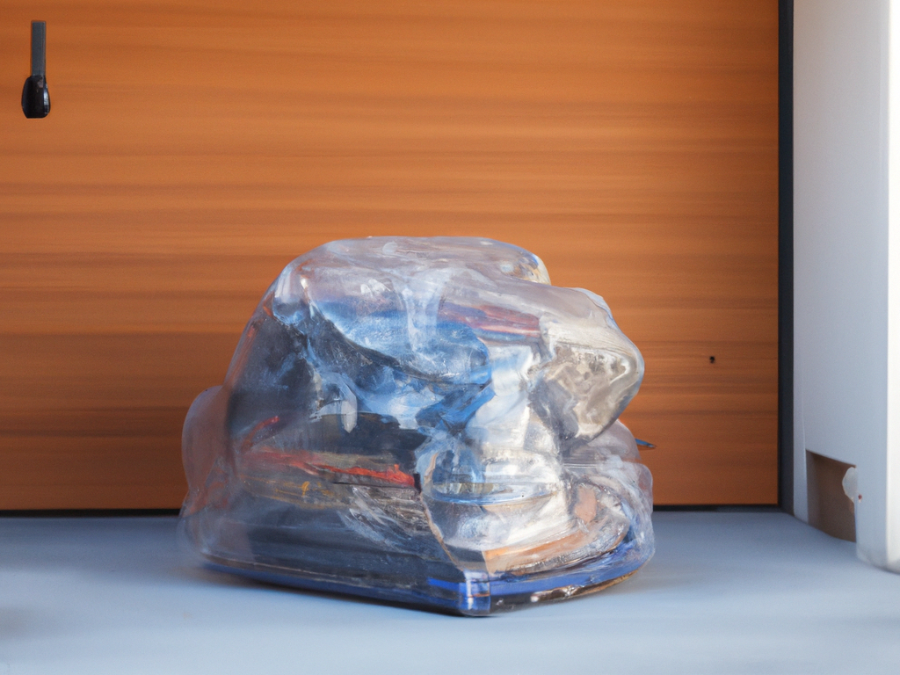
Putting your luggage and bags outside and keeping them in sealed plastic bags can help protect against bed bugs for a few reasons.
Firstly, bed bugs are known to hide in small crevices and tight spaces, such as the seams of luggage and bags. Keeping them in sealed plastic bags can prevent the bugs from getting inside and infesting your belongings.
Secondly, bed bugs are also known to spread easily through travel. If you have been staying in a hotel or other location where bed bugs are present, it’s possible that you may have unknowingly brought some home with you. Keeping your luggage and bags outside and in sealed plastic bags can prevent these bugs from entering your home and starting a new infestation.
Lastly, keeping your luggage and bags outside and in sealed plastic bags can also help to prevent bed bugs from getting into your car or other modes of transportation. This can prevent the bugs from spreading to other locations and potentially starting new infestations.
Overall, using sealed plastic bags to protect your luggage and bags is a simple, effective, and low-cost way to prevent bed bugs from infesting your belongings, your home, or spreading to other locations.
Leave furniture pieces outside until you can inspect them completely.
If you are bringing home pieces of furniture, leave them outside until you have time to inspect them. Looks in all the cracks and crevices to make sure you don’t see any signs of bed bugs.
Make use of all these tips as you return home from your dorm and prevent bed bugs from transferring and infesting your home.
In conclusion, bed bugs can infest dorm rooms just like any other living space. With a rising number of bed bug infestations in college dormitories, it is important for students and parents to be aware of the potential risks and take preventative measures. This includes inspecting the room, checking all furniture and walls, and reporting any infestations to the dormitory administration.
Also, it is a good idea to use bed bug monitors and detectors to identify bed bug activities in your room. These devices can help you detect bed bugs early on, before they have a chance to establish a full-blown infestation. If bed bugs are found, it is crucial to act quickly by washing bedding and clothes, vacuuming regularly, and being more organized. Also, it’s important to advocate and warn other students of possible infestations, so they can also take the necessary steps to prevent bed bugs in their dorm rooms. With the right knowledge, actions, and tools, bed bugs don’t have to be a problem in dorm rooms.

